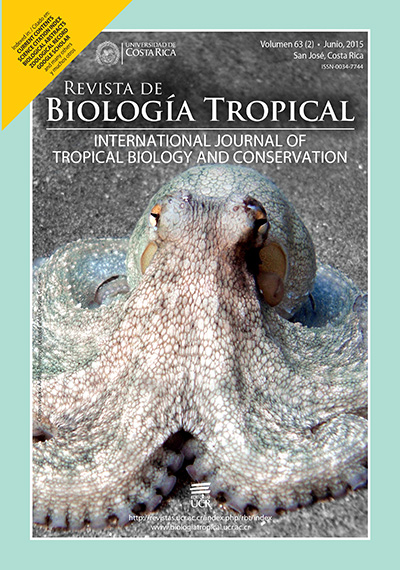Abstract
The shells of molluscs protect them from physical damage, predators and dehydration. We studied various local uses of shells and their biochemical properties in Abeokuta, Nigeria. A standard structured questionnaire about use was applied to 100 snail and herb sellers and shells from 120 adult individuals of Archachatina marginata, Achatina achatina, Achatina fulica, Littorina littorea, Meretrix lusoria and Merceneria mercenaria were evaluated for their mineral components (Ca2+, Fe2+, Mg2+, Na+, Zn+, P+, K+) and proximate composition (crude protein, ash, fibre, crude fat and carbohydrate) using standard methods. Properties against fungi and bacteria isolates were also tested. These shells are used for bleaching, brushing, abrasion and others. The weight of the shells varied from 0.5g (L. littorea) to 25.00g (A. marginata) and thickness from 0.46mm in M .lusoria to 5.35mm in M. mercenaria. We found no inhibitory effect against fungi and bacterial isolates. The molluscs are high in carbohydrates (83.54-92.76g/100g) and low in protein (0.16-0.38g/100g). The fat content ranged between 0.42g/100g and 0.82g/100g, and ash between 2.14g/100g and 9.45g/100g. Ca2+ was the most abundant (10.25-96.35mg/g) while K+ was the least abundant (0.3-0.7mg/g) (p<0.05). Active ingredients of these shells can be used in the feed and construction industries.References
Abiona, J. A., Akinduti, A., Osinowo, O. A., & Onagbesan, O. M. (2013). Comparative evaluation of inhibitory activity of epiphragm from albino and normal skinned giant African land snail (Archachatina marginata) against selected bacteria isolates. Ethiopia Journal of Environmental Studies and Management, 6(2), 177-181.
Ademolu, K. O., Idowu, A. B., Mafiana, C. F., & Osinowo, O. A. (2007). Performance, proximate and minerals analysis of African giant land snail (Archachatina marginata) fed different nitrogen sources. Tropical Veterinarian, 25(4), 124-131.
Adewuyi, A. P., & Ola, B. F. (2005). Application of waterworks sludge as partial replacement for cement in concrete production. Science Focus Journal, 10(1), 123-130.
Adikwu, M. U. (2012). Snail production for sustainable development and good health. In S. I. Ola, G. A. Dedeke, & A. O. Fafiolu (Eds.), Procceedings of the 1st International Conference on Giant African Land snails (NeTGALS) (pp. 3-7). Federal University of Agriculture, Abeokuta, Nigeria.
Adewuyi, A. P. (2014). Relevance of residues of snail farming to civil engineering construction works. In J. A. Abiona, & I. O. Osunsina (Eds.), Proceedings of the 3rd International Conference on Giant African Land Snails (NeTGALS) (pp. 18-25). Federal College of Education, Abeokuta, Nigeria.
Agbelusi, E. A., & Ejidike, B. N. (1992). Utilization of the Giant African Land Snail, Archachatina marginata in the humid area of Nigeria. Journal of Tropical Agriculture, 69, 88-92.
Akinloye, O. A., & Olorode, O. (2000). Effect of different feeding condition on performance, haemolymph biochemical and mineral value of Giant African Snail (Archachatina marginata). Journal of Agriculture and Environment, 1, 143-147.
Akinnusi, F. A. O. (2004). Introduction to Snails and Snail farming. Abeokuta, Nigeria: Gbemi Sodipo Press Ltd.
Amubode, A. A., & Fafunwa, F. (2014). Snail farming and hospitality industries. In In J. A. Abiona, & I. O. Osunsina (Eds.), Proceedings of the 3rd International Conference on Giant African Land Snails (NeTGALS) (pp. 31-36). Federal College of Education, Abeokuta, Nigeria.
Amusan, J. A., & Omidiji, M. O. (1998). Edible Land Snail: A Technical Guide to Snail Farming in the Tropics. lbadan, Nigeria: Verity Printer Limited.
Association of Official Analytical Chemist (A.O.A.C.). (1990). 13th edition. Washington, D.C.: Lexington Books Inc.
Bertine, K. K., & Goldgerg, E. D. (1972). Trace elements in clams, mussels and shrimps. Limnology and Oceanography, 17(6), 877-884.
Egonmwan, R. I. (2008). Effects of dietary calcium on growth and oviposition of the African land snail Limicolaria flammea (Pulmonata:Achatinidae). Revista de Biología Tropical, 56(1), 333-343.
Falade, F. (1995). An Investigation of Periwinkle Shell as Coarse Aggregate in Concrete. Building and Environment, 30(4), 573-577.
Finkelstein, A. D., Wohlt, J. E., & Emmanuele, S. M. (1993). Composition and nutritive value of ground sea clam shells as calcium supplements for lactating Holsten cows. Journal of Dairy Science, 76(2), 582-589.
Hodasi, J. K. N. (1982). The effect of different light regimes on the behavior and biology of Achatina achatina. Journal of Molluscan Studies, 48, 1-7.
Howarth, R. W., & Giblin, A. (1983). Sulphate reduction in salts marshes at Sapelo Island, Georgia. Limnology and Oceanography, 28(1), 70-82.
Idowu, A. B., Somide, O. M., & Ademolu, K. O. (2008). Comparative Analysis of the chemical composition of the haemolymph, flesh and the microflora content of the guts of some African land snails in Abeokuta, Nigeria. Tropical Veterinarian, 26(1&2), 20-29.
Jatto, O. E., Asia, I. O., & Medjor, W. E. (2010). Proximate and mineral composition of different species of snail shell. The Pacific Journal of Science and Technology, 11(1), 416-419.
Kayode, O. V., & Ademolu, K. O. (2014). Antimicrobial and Biochemical properties of Haemolymph from two snail ecotypes. In J. A. Abiona, & I. O. Osunsina (Eds.), Proceedings of the 3rd International conference on Giant African Land Snails (NeTGALS) (pp 45-48). Federal College of Education, Abeokuta, Nigeria.
Muszbek, L., Bagoly, Z., Bereczky, Z., & Katona, E. (2008). The involvement of blood coagulation factor XIII in fibrinolysis and thrombosis. Cardiovascular and Hematological Agents in Medical Chemistry, 6(3), 190-205.
Sodipe, O. G., Osinowo, O. A., Onagbesan, O. M., & Bankole, O. M. (2012). Evaluation of the haemolymph of the Giant African land Snails Achatina achatina and Archachatina marginata for bacteria sterility and inhibitory properties. Proceedings of the 1st International Conference on Giant African Land snails (NeTGALS), Federal University of Agriculture, Abeokuta.
Yusuff, A. A., & Oseni, O. A. (2004). Nutritional value and functional properties of pond snail (Lymnae stagnalis). I. C. Eromosele, & T. O. S. Popoola (Eds.), Proceedings of the 1st International Conference on Science and National Development (pp. 90-93). College of Natural Sciences, Federal University of Agriculture, Abeokuta, Nigeria.
##plugins.facebook.comentarios##

This work is licensed under a Creative Commons Attribution 4.0 International License.
Copyright (c) 2015 Revista de Biología Tropical


